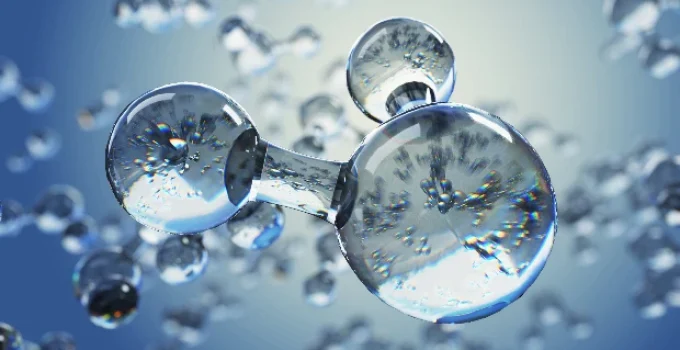What Is the Difference Between Molecules and Compounds?
✅ Answer:
The difference between molecules and compounds is that a molecule is made of two or more atoms bonded together, while a compound is a specific type of molecule made of different kinds of atoms. All compounds are molecules, but not all molecules are compounds.
🧭 Dive Deeper:
- What Is a Molecule?
- What Is a Compound?
- How Molecules and Compounds Are Related
- Key Differences Between Molecules and Compounds
- Examples of Molecules vs. Compounds
- Why This Matters in Science
- 🎯 Final Thoughts
- 📚 References
What Is a Molecule?
A molecule is a group of two or more atoms that are chemically bonded together. These atoms can be:
- The same type (like two oxygen atoms: O₂)
- Different types (like hydrogen and oxygen: H₂O)
Molecules are the smallest units of substances that can still keep their chemical identity.
🔬 Science Fact:
Even gases in the air, like nitrogen (N₂) and oxygen (O₂), are molecules made from two atoms of the same element [1].
What Is a Compound?
A compound is a type of molecule that contains atoms from two or more different elements. These atoms are bonded together in a fixed ratio.
For example:
- Water (H₂O) has 2 hydrogen atoms and 1 oxygen atom.
- Salt (NaCl) has sodium and chlorine atoms.
Each compound has different properties from the elements that make it.
⚗️ Important Note:
All compounds are molecules, but not all molecules are compounds—because some molecules contain only one kind of atom [2].
How Molecules and Compounds Are Related
Think of it like this:
- A molecule is any group of atoms bonded together.
- A compound is a molecule that contains different types of atoms.
So:
- O₂ (oxygen gas) = molecule ✅, compound ❌
- H₂O (water) = molecule ✅, compound ✅
📘 Quick Analogy:
If molecules are like words, then compounds are words made from different letters (elements).
Key Differences Between Molecules and Compounds
| Feature | Molecule | Compound |
|---|---|---|
| What is it? | Two or more atoms bonded together | Molecule made of different elements |
| Can be same atoms? | ✅ Yes (e.g., O₂, N₂) | ❌ No — must be different elements |
| All compounds are…? | Molecules | Not all molecules are compounds |
| Example | O₂, H₂, H₂O, CO₂ | H₂O, CO₂, NaCl |
🧪 Helpful Tip:
If all the atoms are the same type, it’s a molecule—but not a compound.
Examples of Molecules vs. Compounds
✅ Molecules (can be same or different atoms):
- O₂ – oxygen gas (same atoms)
- N₂ – nitrogen gas (same atoms)
- H₂O – water (different atoms)
- CO₂ – carbon dioxide (different atoms)
✅ Compounds (different atoms only):
- H₂O – water
- CO₂ – carbon dioxide
- NaCl – table salt
- CH₄ – methane
🌍 Real-World Note:
The air you breathe contains molecules like O₂ and N₂, but also compounds like CO₂.
Why This Matters in Science
Understanding molecules and compounds helps scientists:
- Predict how substances will react
- Understand how life functions
- Build new materials, medicines, and fuels
In everyday life, you encounter thousands of compounds and molecules—from the water you drink to the plastic in your backpack.
🧬 Biology Connection:
Your body uses complex molecules and compounds like proteins and DNA, all built from bonded atoms!
🎯 Final Thoughts
So, what is the difference between molecules and compounds? Molecules are made of any two or more atoms, while compounds are molecules made of different types of atoms.
In simple terms:
Every compound is a molecule, but not every molecule is a compound.
This difference is small—but it’s a big deal in the world of chemistry and biology!
📚 References
- BBC Bitesize. “Atoms, Elements, and Compounds.”
https://www.bbc.co.uk/bitesize/topics/zstp34j - Royal Society of Chemistry. “Atoms, Molecules, and Ions.”
https://edu.rsc.org/cpd/atoms-molecules-and-ions/3010574.article - CK-12 Foundation. “Atoms and Molecules.”
https://flexbooks.ck12.org/cbook/ck-12-middle-school-earth-science-flexbook-2.0/section/3.1/primary/lesson/atoms-to-molecules-ms-es/
📌Learn More About Compounds
- What’s the Difference Between Organic and Inorganic Compounds? 🌿⚗️
- What’s the Difference Between Elements and Compounds? ⚛️🔬
- What Is the Difference Between Atoms and Molecules? ⚛️🧪
- What Is the Difference Between a Compound and Mixture?⚗️🥣
- What Are Ionic and Covalent Compounds?⚛️
